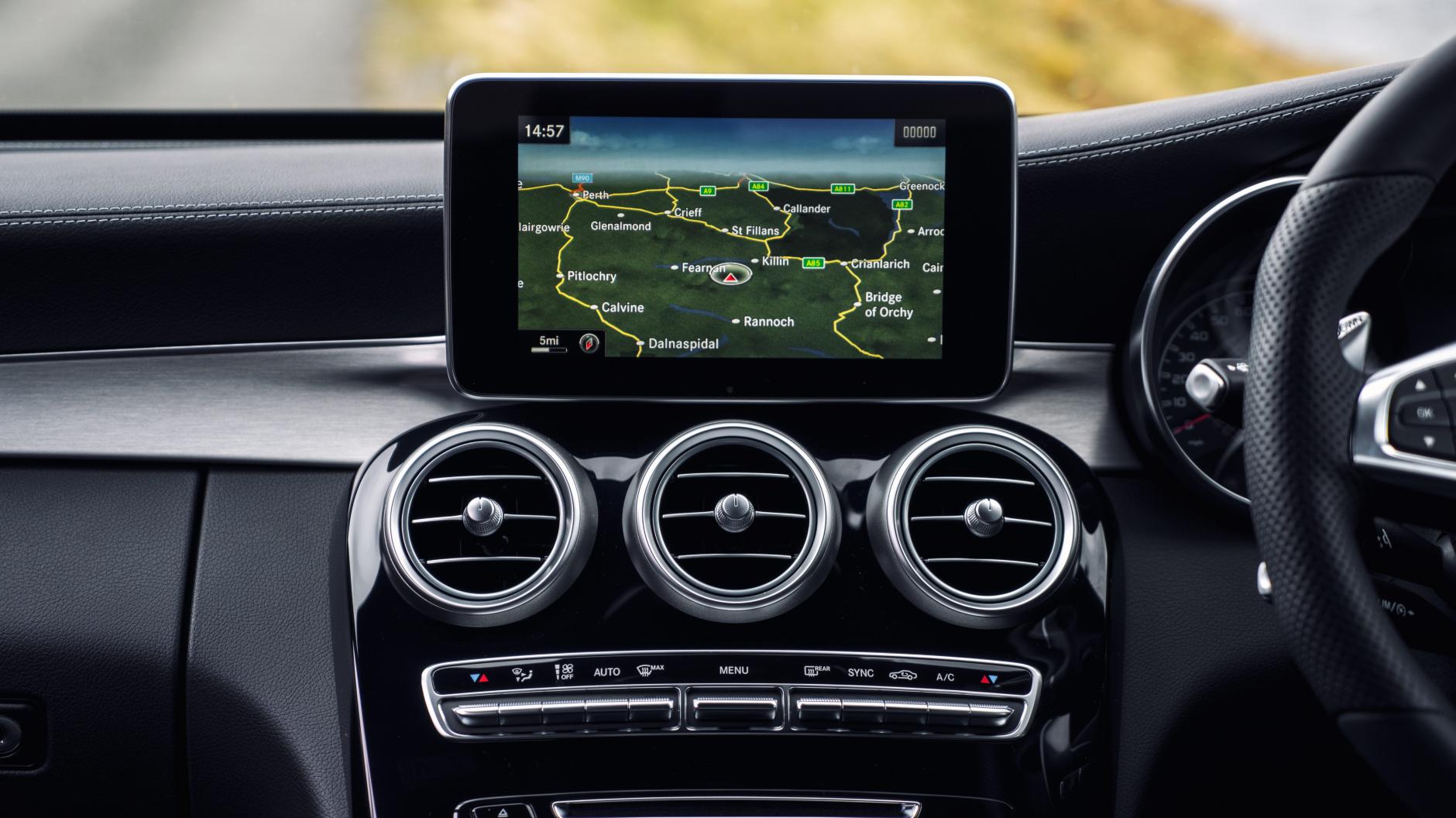
A new Mercedes was revealed last week. The C63 AMG Coupe looks like it'll be a mighty tyre-shredder – and a major poke in the eye for BMW's M4.
But, as usual with the release of a new Benz, many chose to ignore the massive power and naughty noise, and instead got jolly cross with the C63's interior design. Because, as with most modern Mercs, the C-Class coupe has one of those 'floating' screens atop its dashboard.
You know the ones. They look like iPads hovering in mid-air. It's a design feature that seems to generate a surprising amount of anger: critics say it looks unfinished, that it ought to fold away, or be faired into the dashboard.
And they can't go and buy a BMW instead, because, hey presto, iDrive's screens live up above the dashboard as well. And Mazda's copied it. More are sure to follow suit.
But why? Recently TopGear.com had a chat with a Mercedes interior designer, who explained what the floating screen was really all about. Here's what we learned...
Are we being conditioned for detachable in-car tablets?
A popular explanation for the iPad-lookalike in new Mercs. Perhaps, it's speculated, the next C-Class will have a fully detachable tablet that you could take with you upon arrival, and sync with your computer...
All very Jetsons, but not the case. Our designer explained a detachable screen would be all but impossible to get through crash tests. To prevent it flying around decapitating occupants in the event of an accident, the screen would require a seriously strong magnet or clasp to hold it securely in place, and you'd require Mr. Universe's physique just to remove it.
And how many people do you see walking around with a tablet anyway? Exactly.
Is it for heat management?
Nope. The theory that positioning the screen in mid-air limits thermal build-up in the dash was poo-pooed by the man from Merc. Modern LCD screens don't get prohibitively hot.
If this was 1976 and Mercedes only had a hulking great cathode-ray tube set (ask your dad) to play with, things would be different.
Can't Mercedes just build the screen back into the dashboard?
Well, it could, but Mercedes is adamant that having the screen stood proud, above the main cabin architecture, is a better idea. It keeps the screen close to the driver's line of sight, without raising the overall scuttle – that is, the base of the widescreen, where it meets the dash.
That helps with visibility, especially for shorter drivers. And if the screen is in your line of sight, you spend less time with your eyes off the road. Difficult to argue that's a bad thing.
Apparently having the screen held up by a hidden support also increases the sensation of space inside a car, And lots of space subliminally tells our brains that this car is more luxurious.
Which, in a Benz, is exactly what buyers are after, says the design bloke. Good point.
Fine, but why can't it just fold away?
An elegant solution, and one that Audi employs in the A3, A6, A7, A8 and Q7. Even the little A1's screen can rotate into the background when you're not using it, albeit with a push of the hand. The more expensive models do it electronically. Good party trick.
So why doesn't Mercedes do the same? Partly, it's a cost thing. Some Mercs are offered with the option of two, or even three, different screen sizes. That means you'd need bespoke dashboard surfaces and mechanism to swallow the screen, which would make building the car a headache.
Multiply that by the number of models in the current Mercedes range (26 and counting, to save you the arithmetic) and you see the scale of the investment required. All for a retractable screen.
So the floating screens are here to stay, then?
More than likely. For one thing, Mercedes sales are stronger than ever, so even if you don't like how the new interiors look, sorry, you're in a minority. You're losing. Lots of people don't mind one jot, and Mercedes is quite happy giving the people what they want.
Maybe Audi has hit on the next big thing – put the screen smack in front of the driver. Right in the instrument binnacle. The TT does just that, as does the new Q7 and high-end VW Passats.
Once the whole VW Group gets screen-in-your-face fever, you just know the rest of the market will follow suit, like it did with LED running lights.
Then again, maybe, say, Toyota will throw all its chips on head-up displays, and the car world will gravitate towards beaming all infotainment info straight onto the windscreen, binning screens altogether.
Or perhaps The Next Big Thing in car cabin design hasn't even been thought of yet. Sat nav directions plumbed directly into your cortex, maybe?
